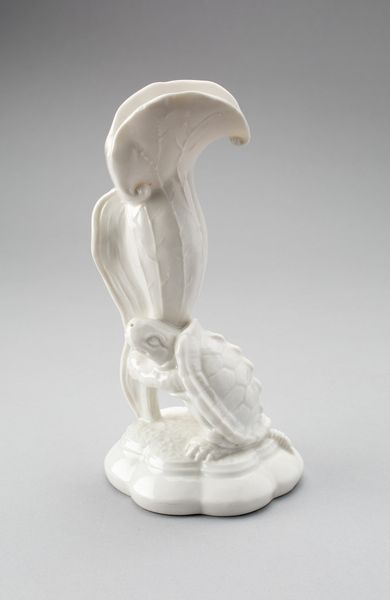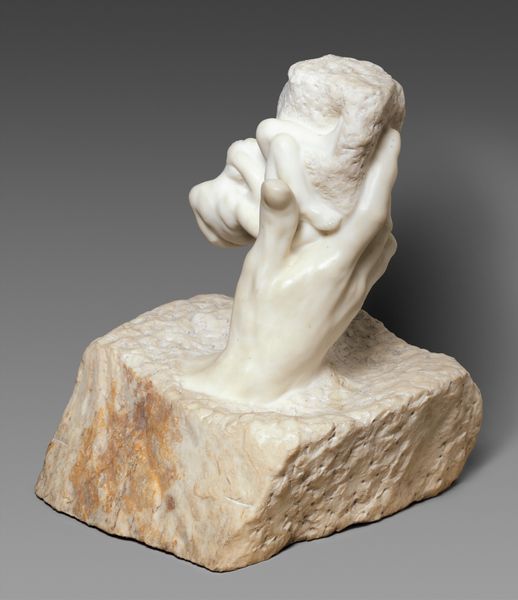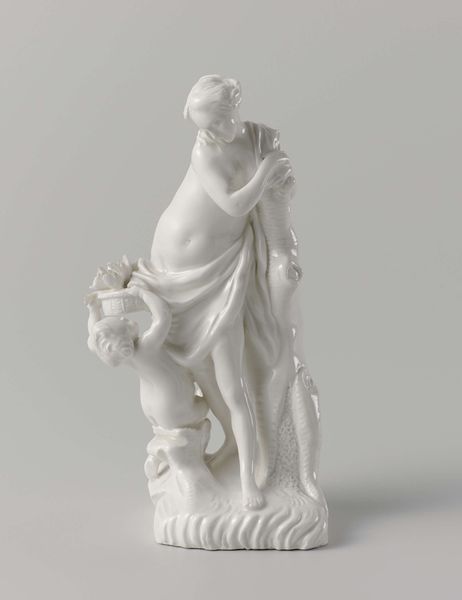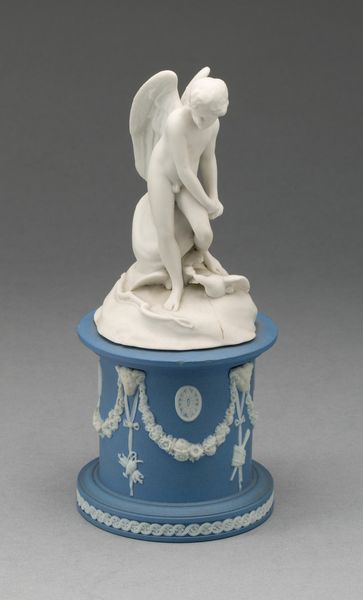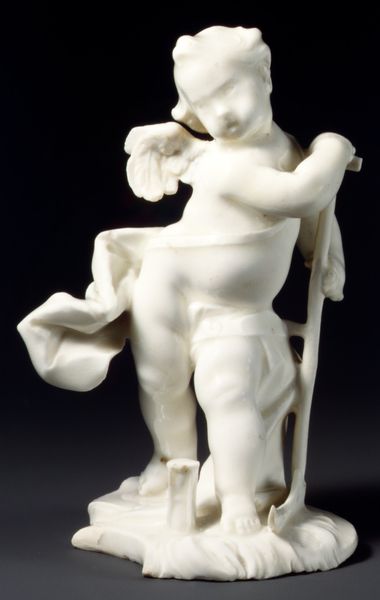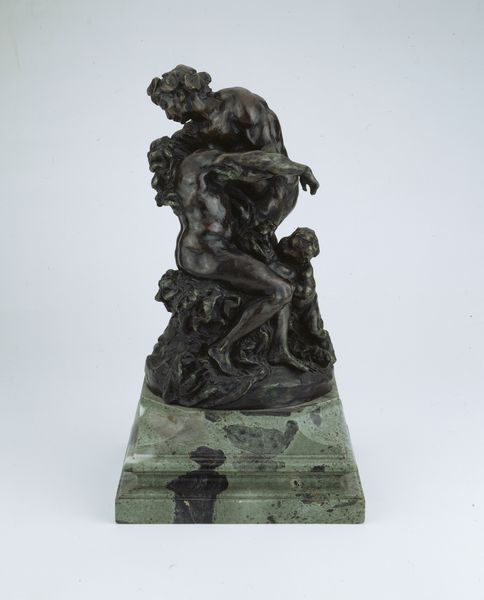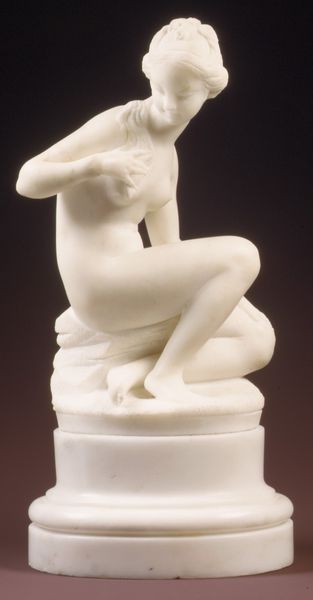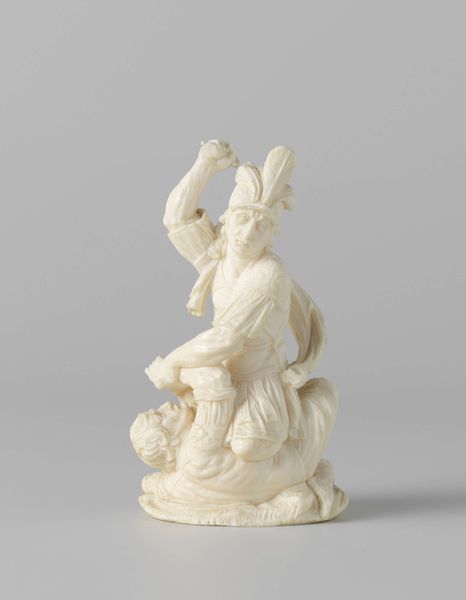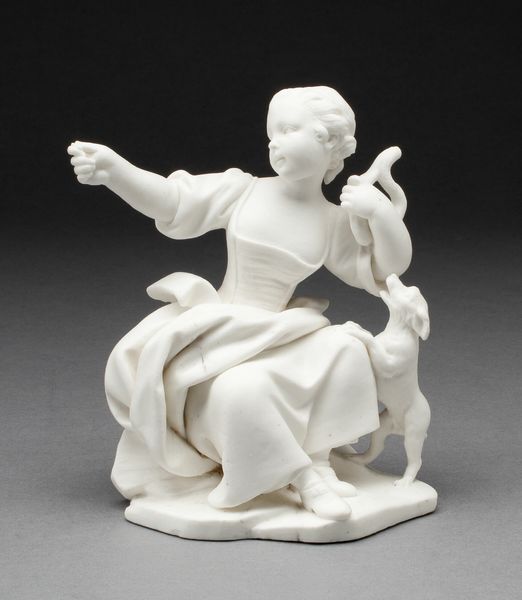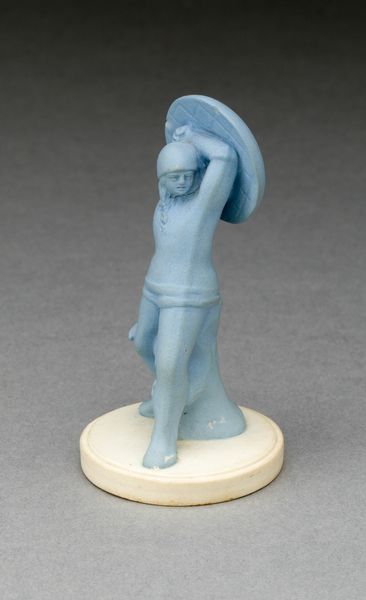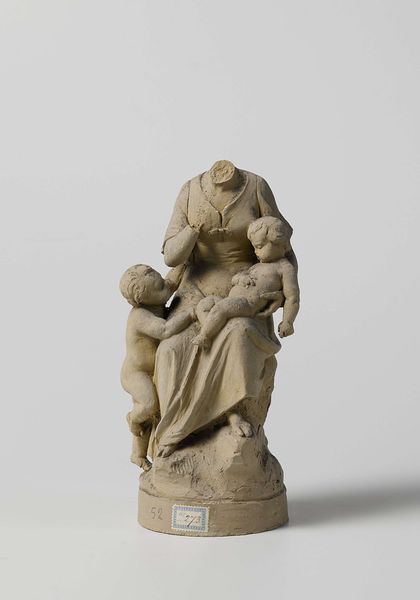
ceramic, sculpture
#
portrait
#
neoclacissism
#
ceramic
#
classical-realism
#
sculptural image
#
figuration
#
sculpture
#
decorative-art
Dimensions: 5.4 × 3.3 cm (2 1/8 × 1 5/16 in.)
Copyright: Public Domain
Editor: So, this is “Chess Piece: Pawn,” a ceramic sculpture from the 19th century, attributed to Wedgwood Manufactory. There's a contemplative, almost mournful mood to it. It’s small, delicate… What stands out to you in this piece? Curator: What I see first is the Neoclassical form striving to capture an emotional narrative. The pawn, in chess, is often seen as the most vulnerable, expendable piece, yet this figure possesses a thoughtful humanity that elevates it beyond mere strategic function. It embodies the human capacity for resilience. How does this resonate with you? Editor: That’s interesting. It’s true, chess pawns can be promoted to queens, so, I see a transformation... Maybe this sculpture captures the turning point. Is this common in chess piece art? Curator: Not particularly for chess pieces, no. The power here lies in subverting the object's symbolic meaning through representational visual language. What do you feel when viewing its position? It is not, after all, 'standing', nor fighting - the poses common to the visual language surrounding chess pieces. Editor: It does look uncomfortable; hunched over. Almost imprisoned by the rough rocky plinth that contrasts with the smooth finish of the human figure. It highlights the burden carried by the everyman or everywoman. How does the medium impact the overall cultural reading? Curator: Wedgwood was a titan in ceramics. His factory brought classical themes into domestic spaces, bridging the elite and the everyday. The choice of ceramic democratizes the symbolism; everyone, no matter their economic or cultural status, becomes a character in an ancient drama. Editor: I didn't think of it that way before. It is more than a simple chess piece - it has been designed to elicit feeling, too. Curator: Indeed. Consider how our understanding of the world is filtered through the objects we choose to surround ourselves with. And this sculpture serves as a mirror, prompting reflection. Editor: Absolutely. It highlights the layers of cultural memory embedded within seemingly simple forms, making me question established visual relationships. Thank you for revealing what this pawn symbolizes in our memories.
Comments
No comments
Be the first to comment and join the conversation on the ultimate creative platform.

